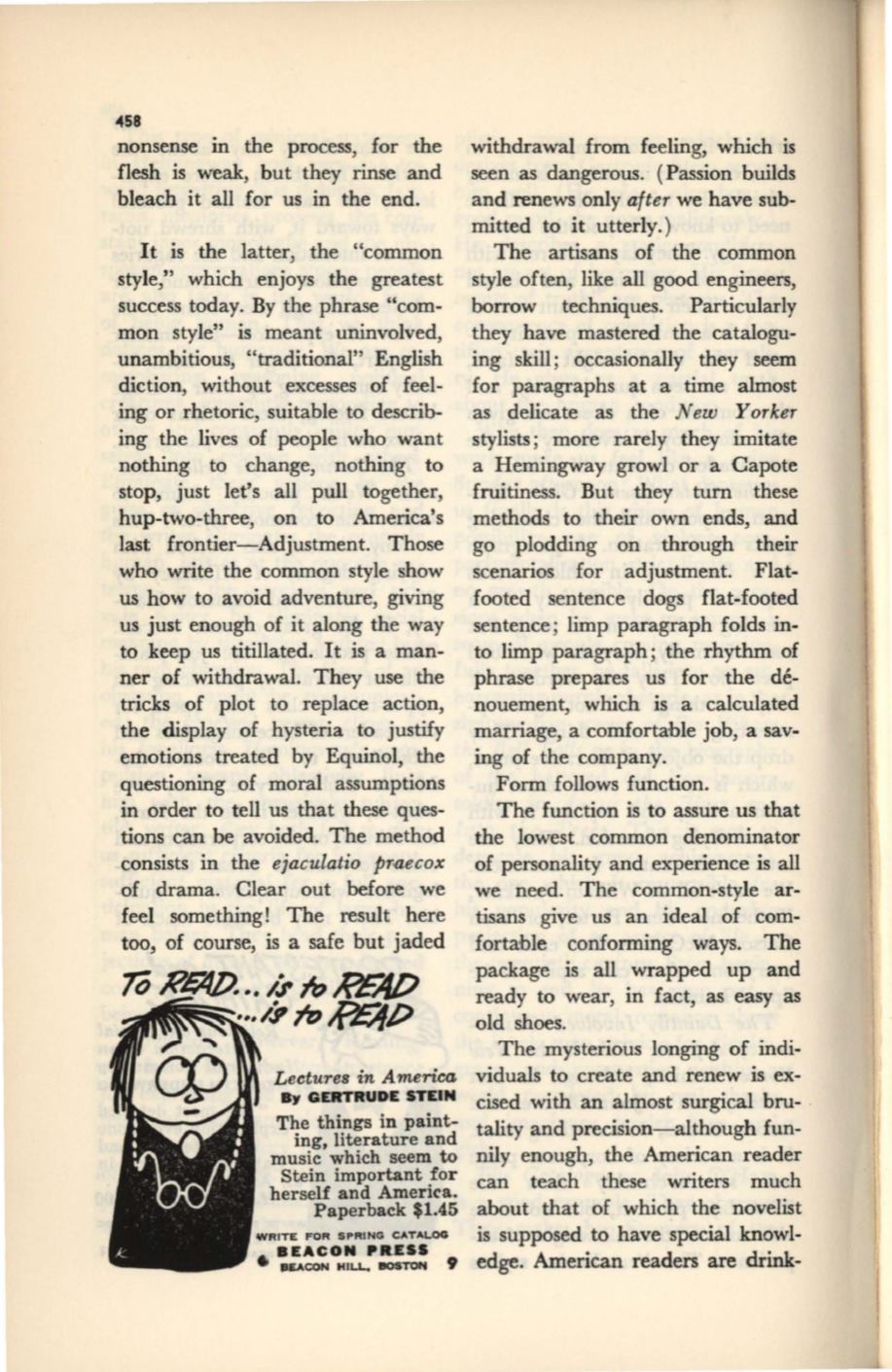
458
nonsense in the process, for the
flesh is weak, but they rinse and
bleach it all for us in the end.
It is the latter, the "common
style," which enjoys the greatest
success today. By the phrase "com–
mon style" is meant uninvolved,
unambitious, "traditional" English
diction, without excesses of feel–
ing or rhetoric, suitable to describ–
ing the lives of people who want
nothing to change, nothing to
stop, just let's all pull together,
hup-two-three, on to America's
last frontier-Adjustment. Those
who write the common style show
us how to avoid adventure, giving
us just enough of it along the way
to keep us titillated. It is a man–
ner of withdrawal. They use the
tricks of plot to replace action,
the display of hysteria to justify
emotions treated by Equinol, the
questioning of moral assumptions
in order to tell us that these ques–
tions can be avoided. The method
consists in the
ejaculatio pr.aecox
of drama. Clear out before we
feel something! The result here
too, of course, is a safe but jaded
Lecture8 in
A
merictl
By GERTRUDE STEIN
The things in paint–
ing, literature and
music which seem
to
Stein important for
herself and America.
Paperback $1.45
withdrawal from feeling, which is
seen as dangerous. (Passion builds
and renews only
after
we have sub–
mitted to it utterly. )
The artisans of the common
style often, like all good engineers,
borrow techniques. Particularly
they have mastered the catalogu–
ing skill ; occasionally they seem
for paragraphs at a time almost
as delicate as the
New Y
or
ker
stylists; more rarely they imitate
a Hemingway growl or a Capote
fruitiness. But they turn these
methods to their own ends, and
go plodding on through their
scenarios for adjustment. Flat–
footed sentence dogs flat-footed
sentence ; limp paragraph folds in–
to limp paragraph; the rhythm of
phrase prepares us for the de–
nouement, which is a calculated
marriage, a comfortable job, a sav–
ing of the company.
Form follows function.
The function is to assure us that
the lowest common denominator
of personality and experience is all
we need. The common-style ar–
tisans give us an ideal of com–
fortable conforming ways. The
package is all wrapped up and
ready to wear, in fact, as easy as
old shoes.
The mysterious longing of indi–
viduals to create and renew is ex–
cised with an almost surgical bru–
tality and precision-although fun–
nily enough, the American reader
can teach these writers much
about that of which the novelist
WRITE FOR SPRING CATALOG
is supposed to have special knowl-
•
~:.~~~u!"!!!!
9
edge. American readers are drink-


